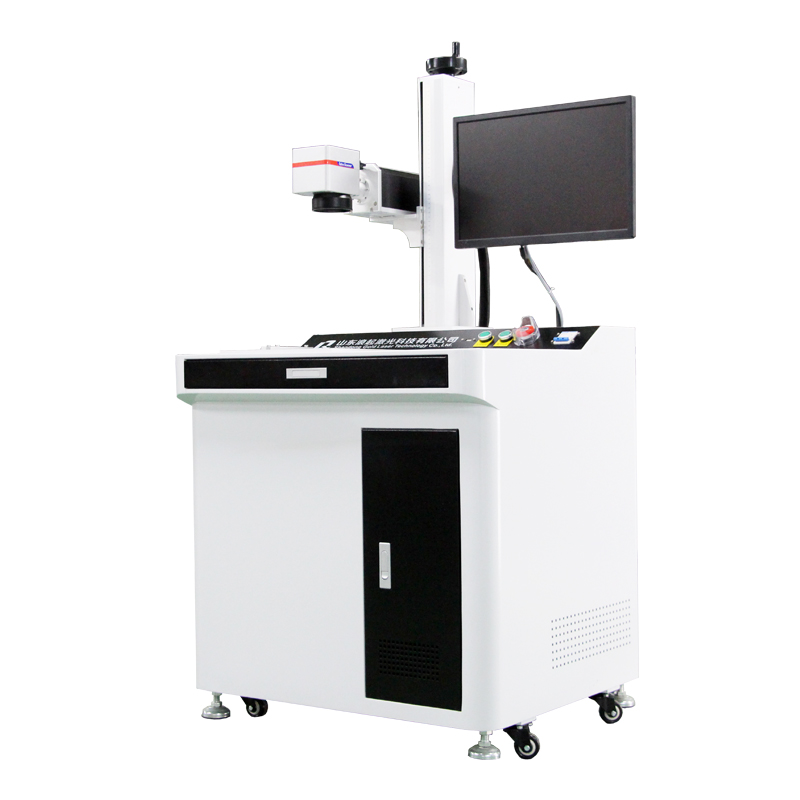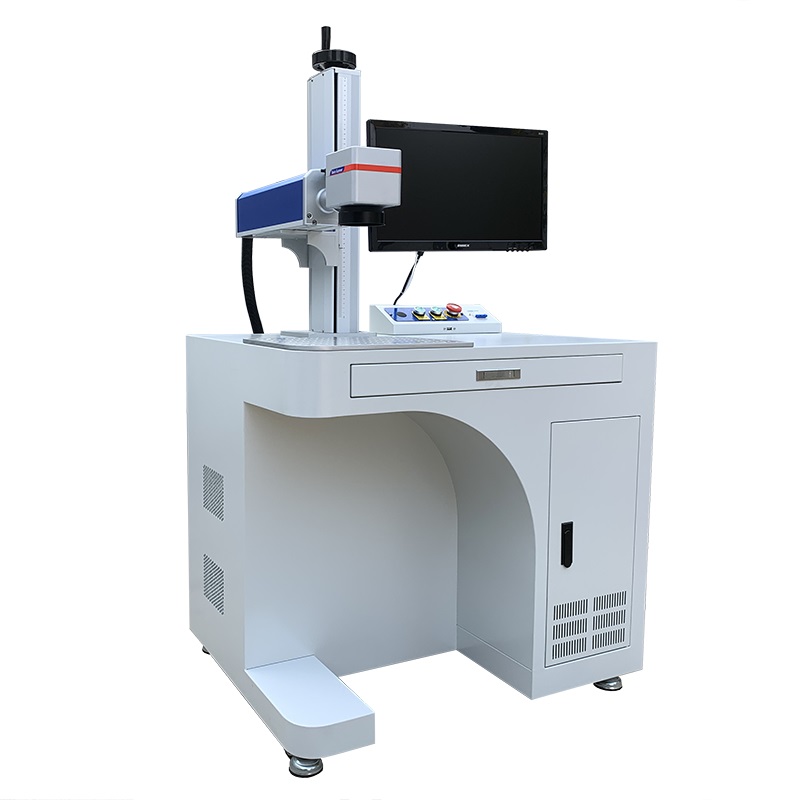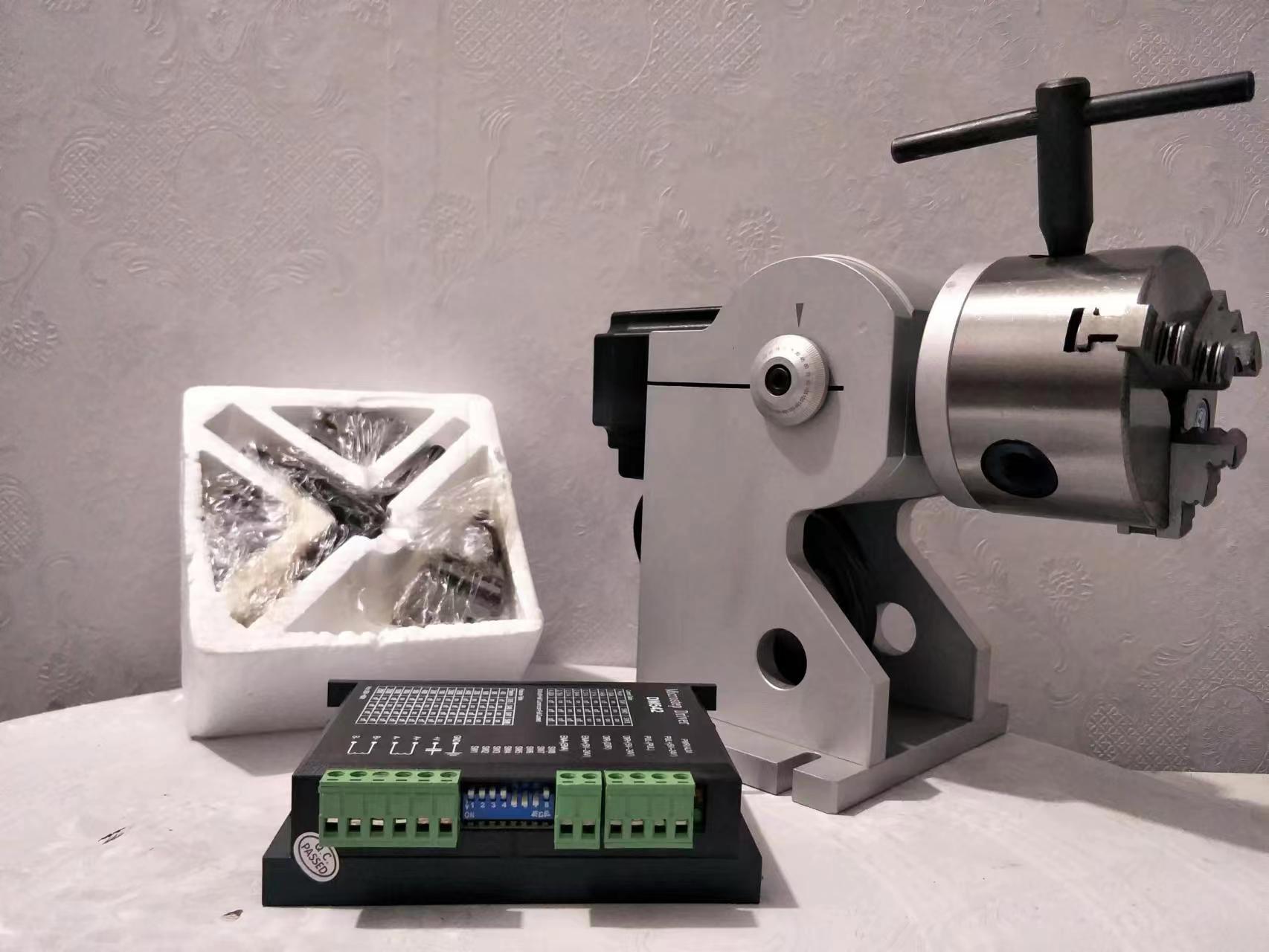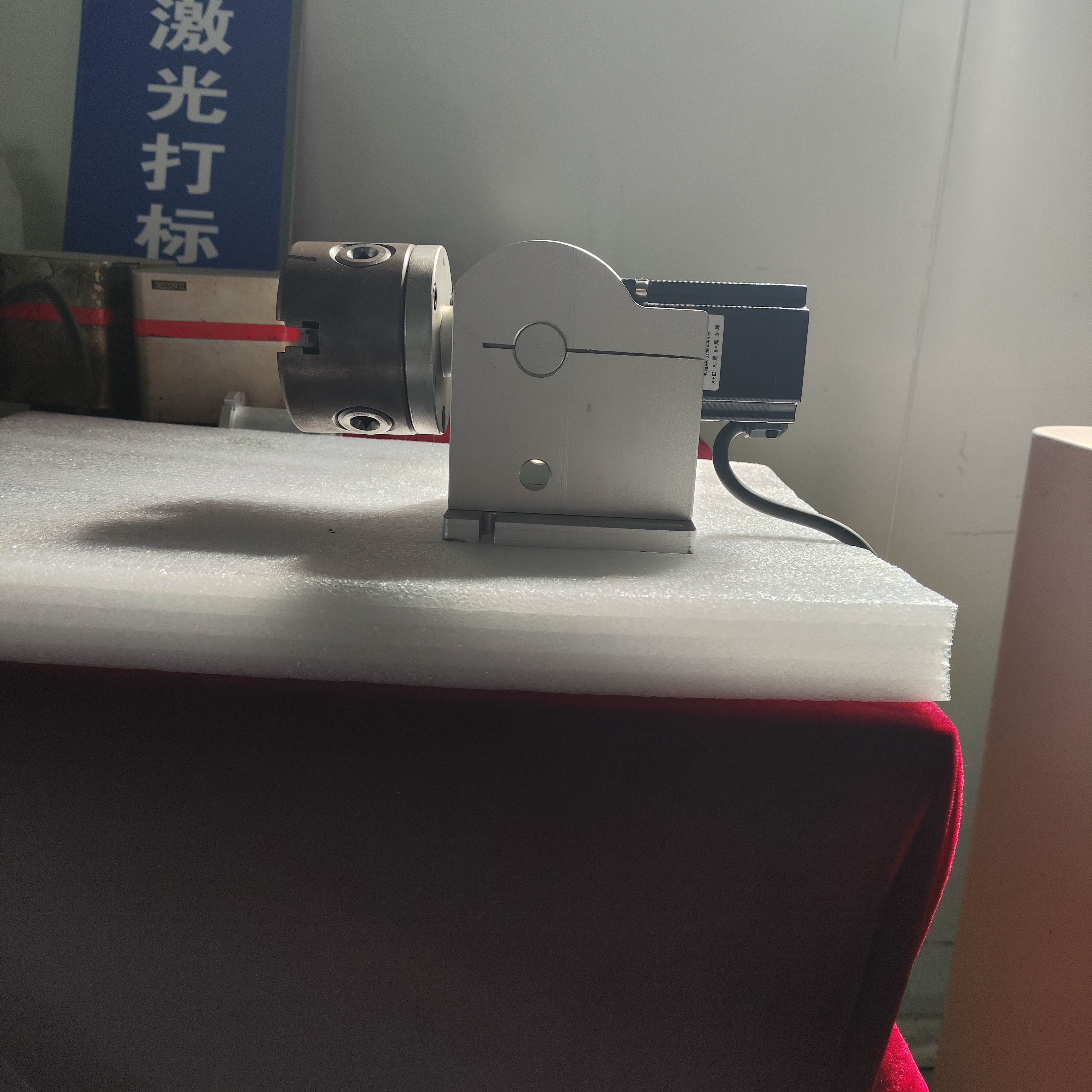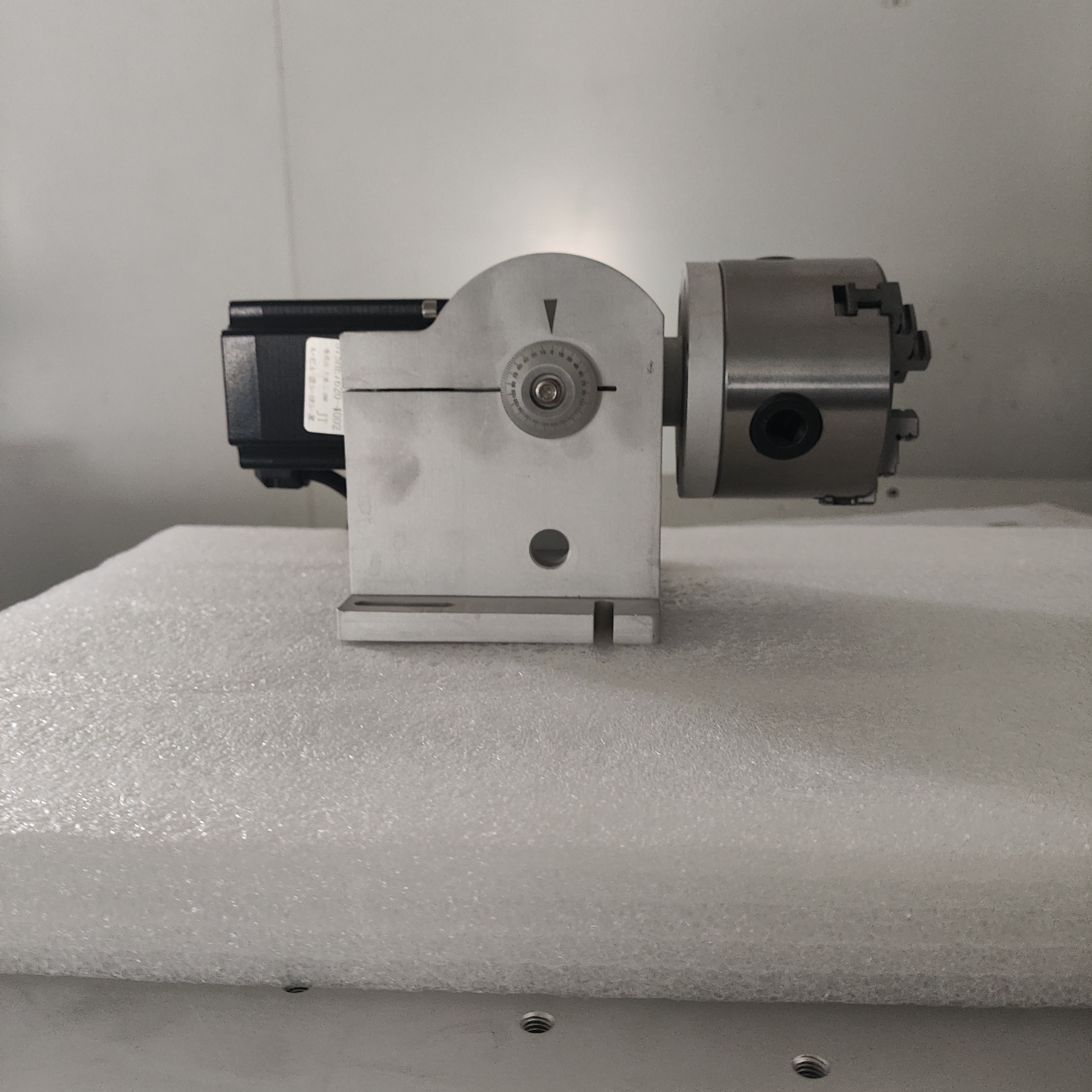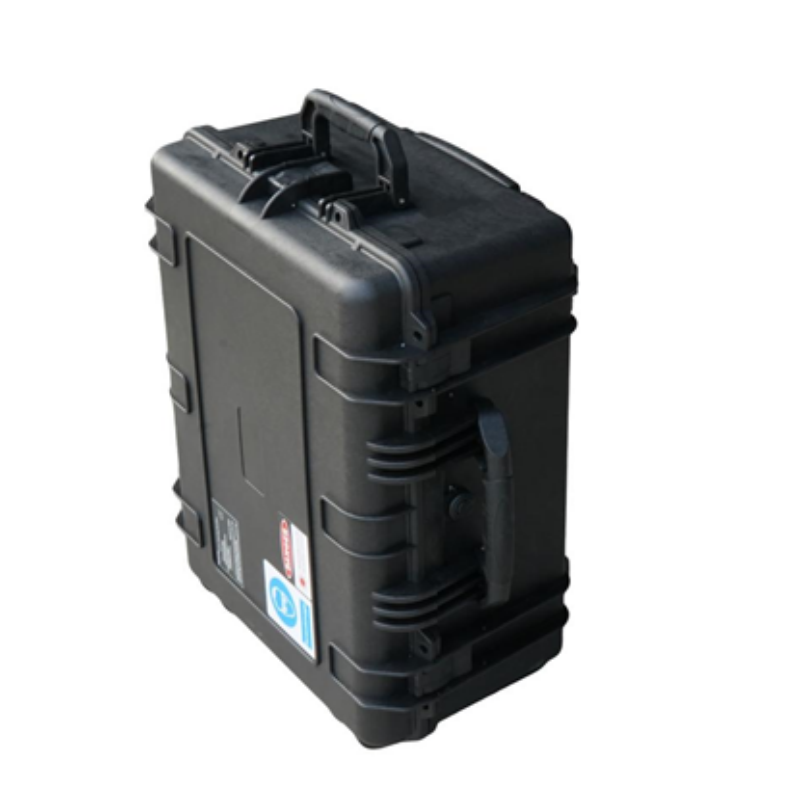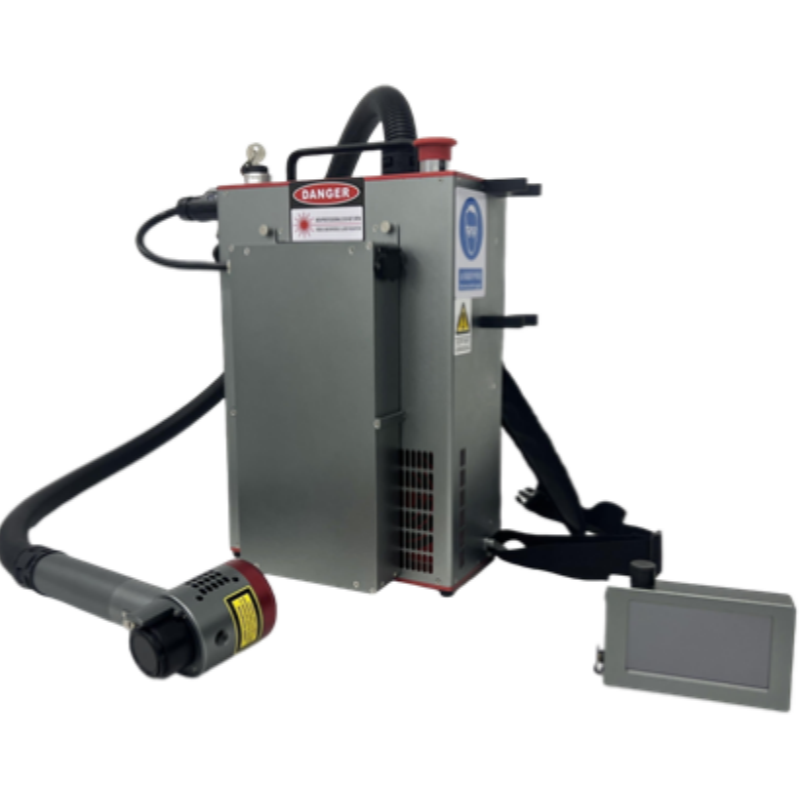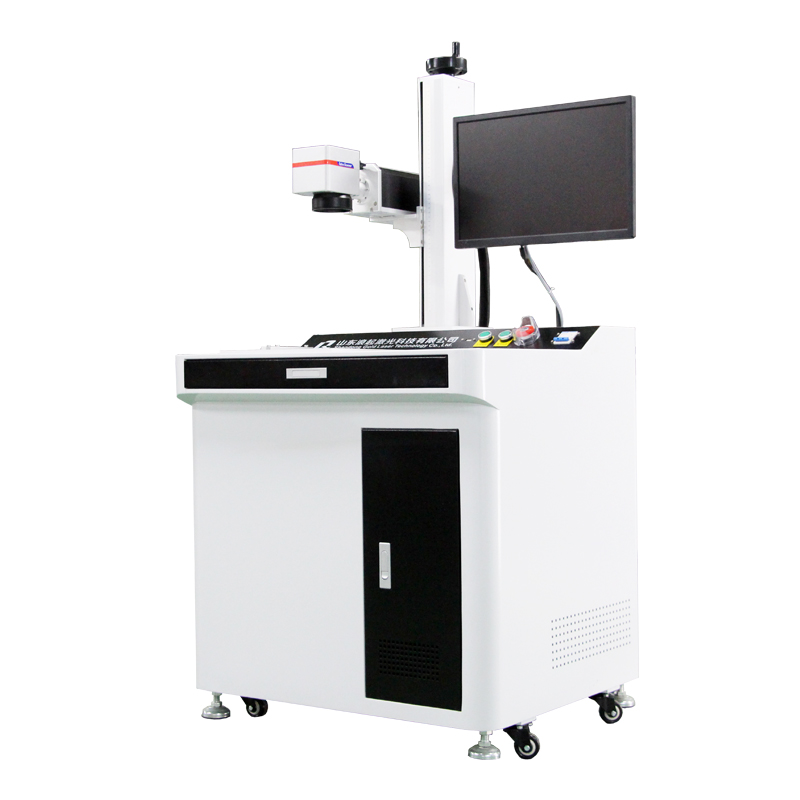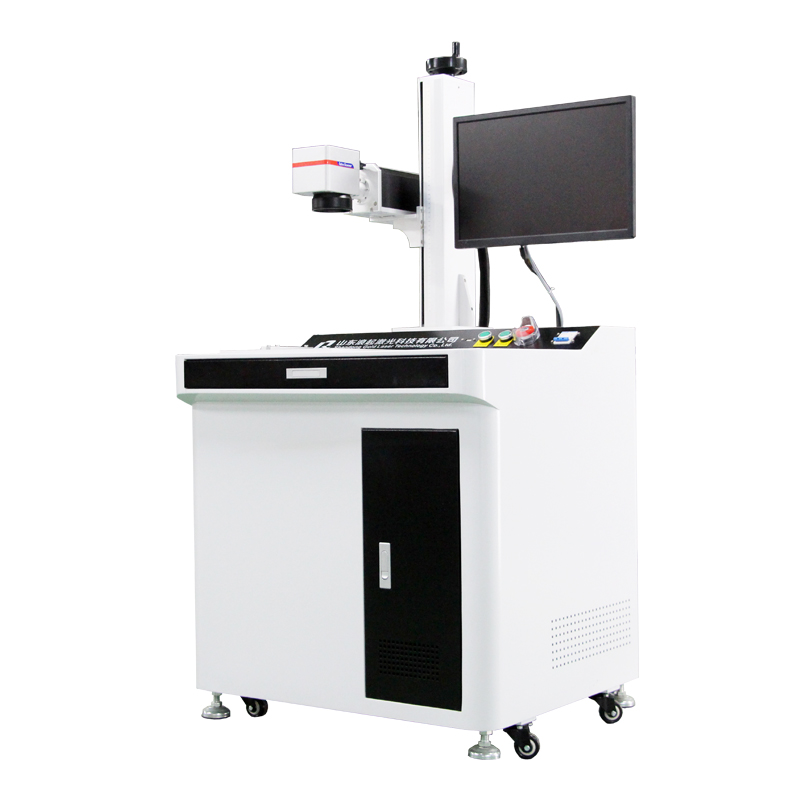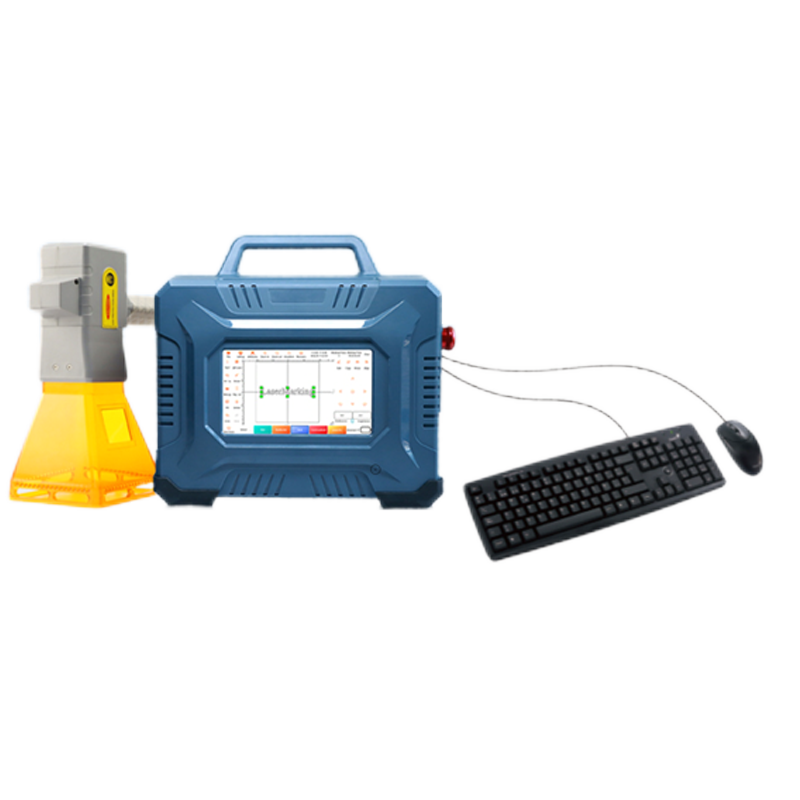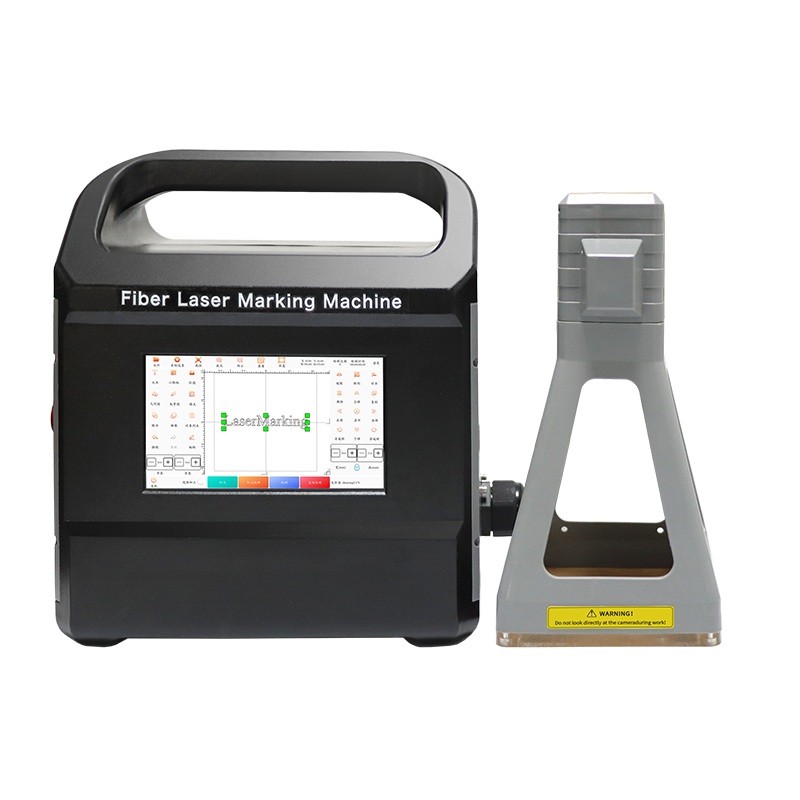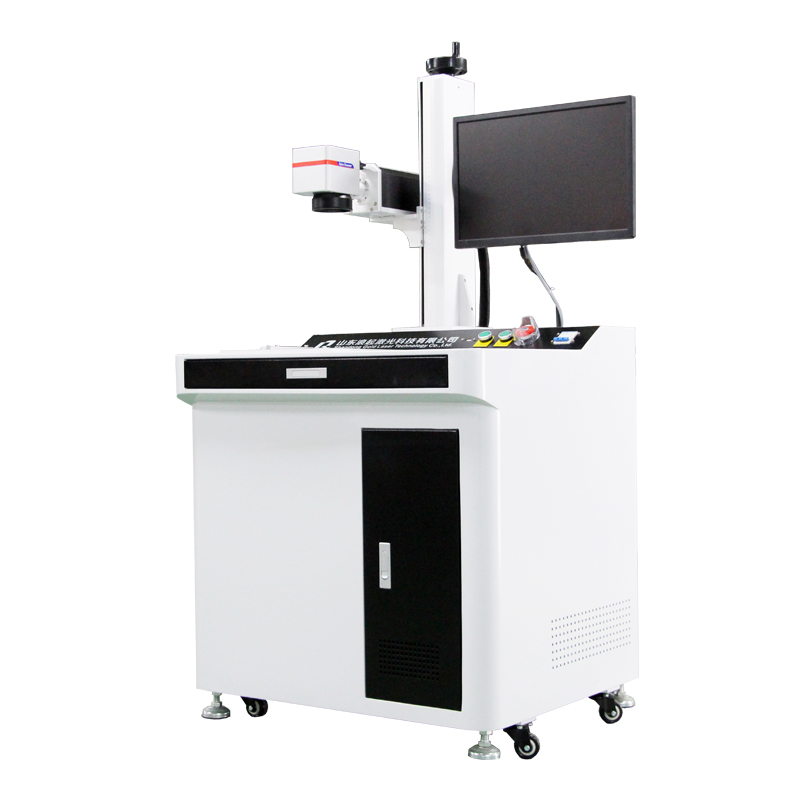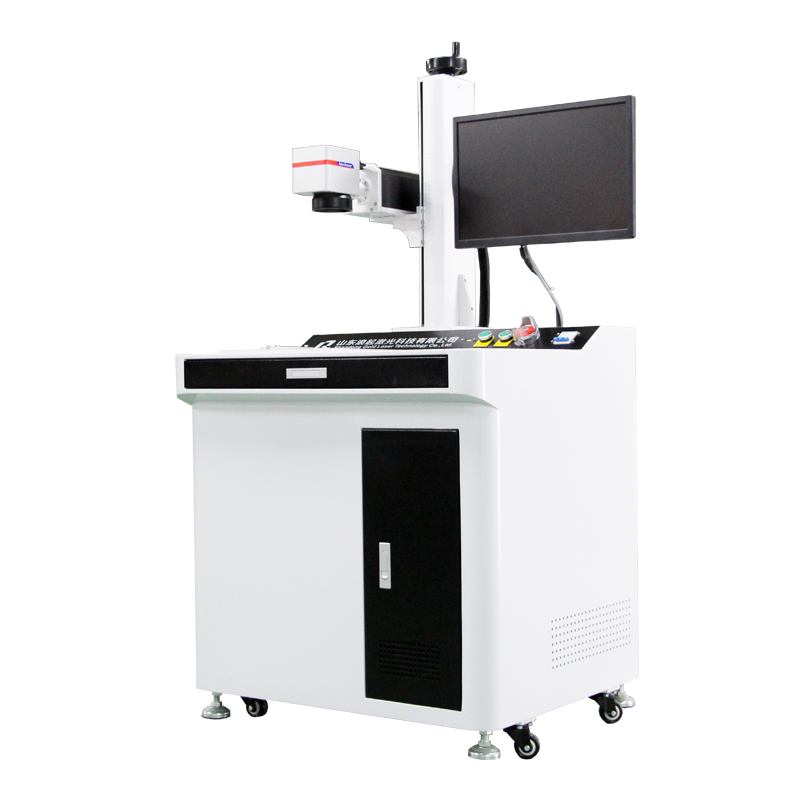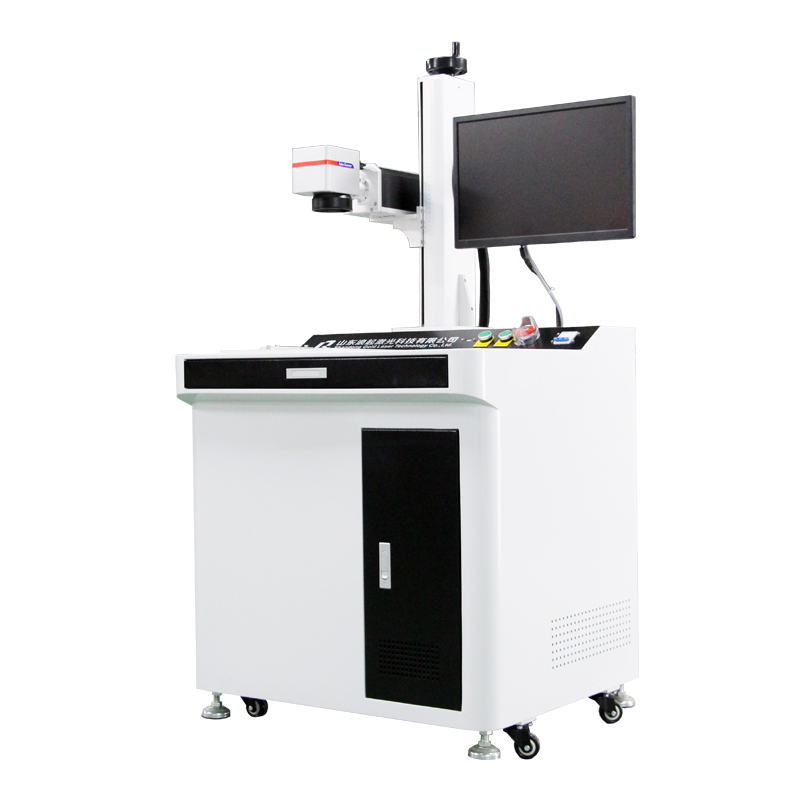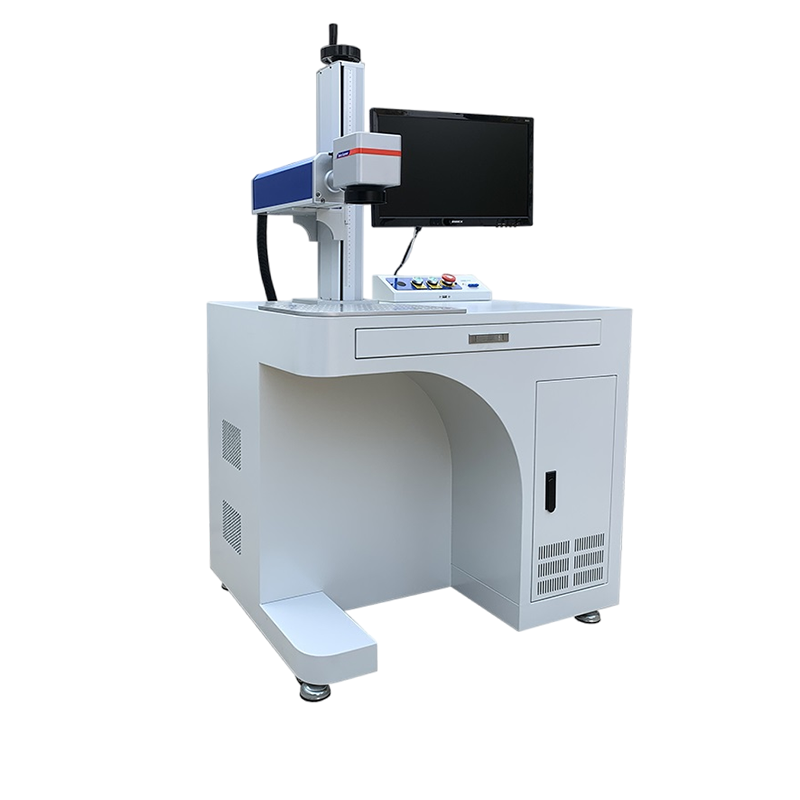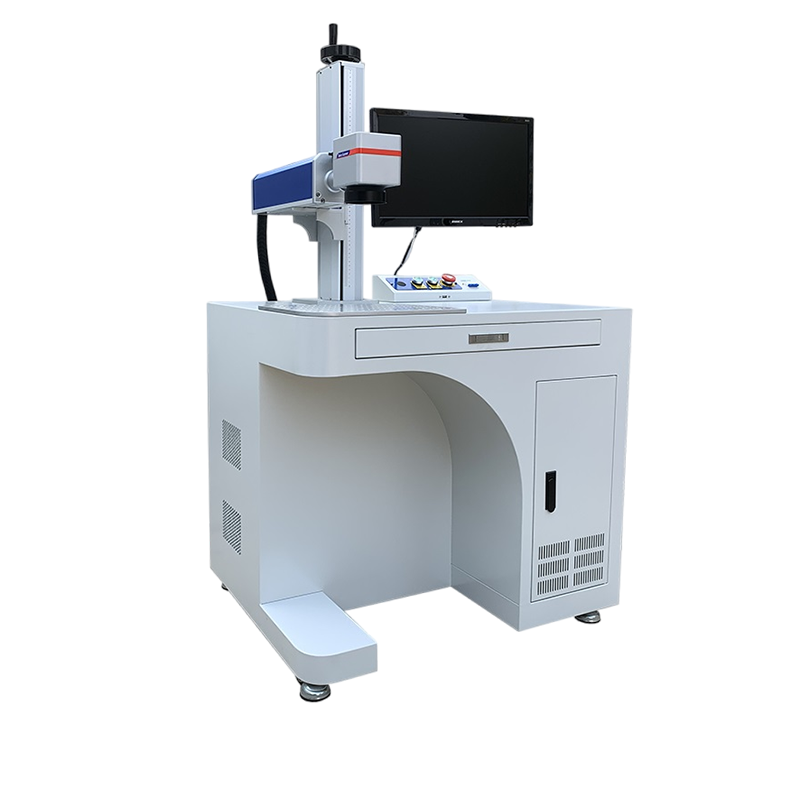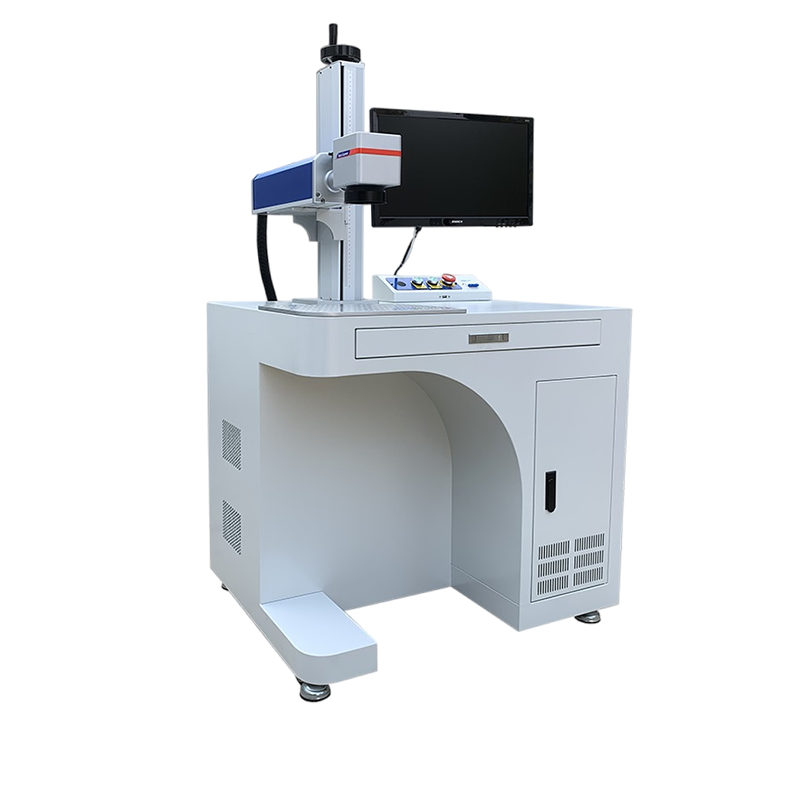- Core Concept: What is the Rotating Axis?
- Key Applications and Industries
- 1. Tool and Hardware Industry
- 2. Medical Device Manufacturing
- 3. Automotive and Aerospace
- 4. Electronics and Semiconductor
- 5. Consumer Goods and Promotional Items
- How It Works: The Synchronization Process
- Key Benefits and Advantages
- Conclusion
Of course. The application of a rotating axis (also commonly called a rotary attachment or 4th axis) is a crucial enhancement for a fiber laser marking machine, fundamentally expanding its capabilities from marking flat, two-dimensional surfaces to marking on the curved surfaces of cylindrical or conical objects.
Here is a detailed explanation of its application, how it works, and its benefits.
Core Concept: What is the Rotating Axis?
In a standard 3-axis laser marking system (X, Y, Z), the laser beam moves over a stationary, flat workpiece. A rotating axis adds a fourth axis of movement—rotation—by turning the workpiece itself along its central axis while the laser head moves along a single line (the X-axis).
The fundamental principle: The laser marking software precisely synchronizes the rotational speed of the object with the linear movement of the laser beam. This synchronisation "unwraps" the curved surface into a flat, virtual plane for the laser to mark on.
Object rotates one full revolution = Laser travels the length of the circumference.
This creates a seamless marking area around the entire object.
Key Applications and Industries
The rotating axis is indispensable in numerous industries where permanent, high-quality marking on round parts is required.
1. Tool and Hardware Industry
Wrenches, Sockets, and Drill Bits: Marking sizes, brand logos, batch numbers, and barcodes.
Screwdrivers: Marking brand and type on the handle or shaft.
Blades: Marking part numbers or logos on cylindrical tool holders.
2. Medical Device Manufacturing
Syringes: Marking graduated volume scales, lot numbers, and expiration dates with high precision and medical-grade cleanliness.
Implants: Marking unique identification numbers (UDIs) on bone screws, spinal rods, and dental implants. This is critical for traceability.
Surgical Instruments: Marking logos and codes on scalpel handles, forceps, and other cylindrical instruments.
3. Automotive and Aerospace
Pistons: Marking serial numbers and specifications.
Bearings: Marking part numbers, size, and manufacturer information.
Shafts and Axles: Marking traceability codes.
Fuel Injectors: Marking calibration data and ID codes.
4. Electronics and Semiconductor
Capacitors and Resistors: Marking values, tolerance, and date codes on tiny cylindrical components.
Connectors: Marking part numbers on metal connector housings.
Chips on Wafers (in specific cases): For marking the edge of silicon wafers.
5. Consumer Goods and Promotional Items
Pens and Pencils: Marking logos and brand names for corporate gifts.
Stainless Steel Water Bottles and Flasks: Engraving intricate designs, names, or logos.
Lighters: Personalizing with text or images.
Golf Balls and Clubs: Marking custom logos or player names.
How It Works: The Synchronization Process
Fixture the Object: The cylindrical object is securely mounted between the chuck and tailstock of the rotary attachment, ensuring it rotates concentrically without wobble.
Software Configuration: The operator inputs the diameter of the object into the laser marking software. The software uses this to calculate the circumference (
C = π × D).Create the Marking Design: The operator creates the text, logo, or barcode as if it were for a flat surface.
Synchronize Motion: The software's "rotary function" maps the flat design onto the calculated circumference. It generates commands that tell the laser head to move in the X-direction at the exact speed that correlates with the rotational speed of the rotary axis.
Execution: During marking, the object rotates smoothly while the laser fires, "printing" the design onto the curved surface without any distortion.
Types of Rotary Attachments:
Chuck Style (Semi-automatic): Manually loaded, ideal for smaller batches and a wide range of diameters.
Roller Style (Fully Automatic): Uses motorized rollers to rotate the object. Excellent for high-volume marking of items like syringes or pens and for objects without a defined central axis, like pre-marked bottles.
Key Benefits and Advantages
Eliminates Distortion: The primary benefit. It ensures that text, logos, and 2D codes (like Data Matrix) are not stretched or warped, maintaining their readability and aesthetic quality.
High Precision and Consistency: Achieves marks with the same high resolution and accuracy on round objects as on flat ones, crucial for UDI compliance in medical devices.
Full 360-Degree Marking: Allows for continuous marking around the entire circumference of an object, which is impossible with a stationary setup.
Increased Throughput and Automation: When integrated with an automated loading system, a rotary axis enables high-speed, hands-off marking of cylindrical parts, significantly boosting production efficiency.
Versatility: A single rotary attachment can handle a vast range of diameters (from a few millimeters to over 200mm, depending on the model) by simply changing the software settings.
Conclusion
The rotating axis is not just an accessory but a transformative accessory for a fiber laser marking machine. It bridges the gap between flat and round, unlocking a massive category of applications across critical manufacturing sectors. By enabling precise, fast, and distortion-free marking on cylindrical and oval objects, it becomes an essential tool for traceability, branding, and customization in the modern industrial landscape.

